-
Featured Items
-
Featured Resources
 Funding & Grants
Don't miss out on funding opportunities. Stay informed with our up to date online listings and email notifications.
Read More
Funding & Grants
Don't miss out on funding opportunities. Stay informed with our up to date online listings and email notifications.
Read More
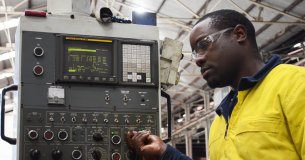 Skilled Migration
Our services help both applicants and employers, to learn more, develop plans, submit applications, and settle in.
Read More
Skilled Migration
Our services help both applicants and employers, to learn more, develop plans, submit applications, and settle in.
Read More
 Research and Analysis
Good research and analysis makes the case. How can our resources and services help your project or application?
Read More
Research and Analysis
Good research and analysis makes the case. How can our resources and services help your project or application?
Read More
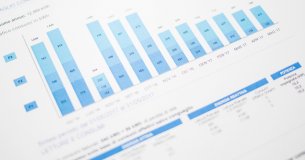 Information & Data Resources
With resources like REMPLAN, Regional Knowledge Base, and decades of data, discover how we can help your project.
Read More
Information & Data Resources
With resources like REMPLAN, Regional Knowledge Base, and decades of data, discover how we can help your project.
Read More
-
Stay InformedSubscribe to one or more of our regular email subscriptions, to be kept up to date on news and funding opportunities for the region
-
-
Our Region
- Our Region
- Regional Plan
- Regional Data
- Current Regional Issues
- Population Migration Analysis for 2016-21
- Job Vacancies Continue at All-Time High
- National Debt - What it Means for Our Economy?
- The True Value of Home Solar
- The Economic Impacts of Local Government Amalgamations
- State of the Regions Report 2014-15
- Antifragility - A different take on regional economic development
- Biohubs - Collaborative Waste Management
- Attracting New Residents
- Socio-Economic Impacts of the Murray Darling Basin Plan
- Murray Darling Basin Water Recovery
- Growing Businesses
- The Northern Inland Economy
- Geographical Overview
- Major Industry Sections
- Our Services
- Grants and Funding
-
Skilled Migration
- Skilled Migration
- Skilled Employer Sponsored Regional Visa
- Skilled Work Regional Visa (subclass 491)
- Temporary Seasonal Workers
- Designated Area Migration Agreement (DAMA)
- Helpful Information for Visa Holders
- Information for Employers
- Case Studies
- Payment Details
- Advice & Further Information
- Contact Details
- News & Events
-
Our Projects
- Our Projects
- Current Projects
- Skilled Migration
- Wool Works - Wool Training Schools
- Metal Works - Welding and Fabrication Schools
- Come On Inland
- Stories of Resilience
- Alt Brothers Beekeeping - Glen Innes
- Carelle's Toy Store - Glen Innes
- Greenhill Orchards - Arding
- Gwydir Meats - Warialda
- Kaputar Motors - Narrabri
- Moonbi General Store - Moonbi
- Sandstock - Tingha
- Sherelle Fashions - Tenterfield
- Sleepy Merino - Inverell
- Tenterfield Chamber of Toursim, Industry and Business - Tenterfeild
- The Welders Dog - Armidale
- Walcha Veterinary Supplies - Walcha
- AGCAP - Agribusiness Careers & Professions
- Northern Inland Regional Investment Profile
- Past Projects
- Digital Economy Strategy
- Business Growth Project
- Go Digital
- How to Start an Online Business
- Create Your Website Using Squarespace
- How to Edit Your Squarespace Site - Part 1
- How to Edit Your Squarespace Site Part 2
- Add a Shop to Your Squarespace Site
- Start a Blog and Find out What Customers are Searching
- 14 Tips For a Better Blog Post
- Which Social Media Platforms are Best for Your Business
- How to Use Facebook Effectively For Your Business – Part 1
- How to Use Facebook Effectively For Your Business – Part 2
- Instagram Tips for Business
- Catching Up, More Instagram & Dealing with Haters
- Getting Started with Twitter for Business
- Social Media Scheduling Tools
- How to Start an Etsy Shop – Part 1 – Research
- How to Start an Etsy Shop – Part 2 – Signup
- Online Security for Your Business
- Product Photography and Website Images: Your Guide
- 5 Tips to Improve your Productivity in your Business
- Best Online Business Resources
- How to Improve Your Communication Skills and Win More Clients
- NBN Coordinator
- Putting Power Back in the Regions
- Road Freight Study
- Town Audit Benchmarks
- Food and Wine
- Youth Survey
- Digital TV Switchover Assistance
- Northern Inland Transport Guide
- Live.Train.Work
- Northern Inland Innovation Awards
- Northern Inland Innovation Awards - 2017
- Northern Inland Innovation Awards - 2016
- Northern Inland Innovation Awards - 2015
- Northern Inland Innovation Awards - 2014
- Northern Inland Innovation Awards - 2013
- Northern Inland Innovation Awards - 2012
- Norther Inland Innovation Awards - 2011
- Prime Super Northern Inland Innovation Awards - 2010
- Prime Super Northern Inland Innovation Awards - 2009
- Northern Inland Innovation Awards - 2007
- Northern Lights Project
- NBN Smart Home
- Murray Darling Basin
- Moree Plains Business Workshops
- Namoi Investment Prospectus
- Industrial Land
- Bioenergy and Local Electricity Retailing
- Northern Inland Business Energy Assessment
- Skills for the Future
- Impacts of COVID-19 on Businesses
- Past Projects of NIRDB
- Aboriginal Employment and Enterprise in the Gunnedah Region
- Art as an Industry
- Aviation Survey
- Farm Forestry - Northern Inland Forestry Investment Group
- New England North West Film Strategy
- Northern Inland Excellence in Business Awards
- Food and Wine 2003 - 2008
- Prime Super Northern Inland Innovation Awards 2009
- Regional Business Networking Program
- Regional Leadership Course 2008
- Viticulture Strategy 2002-2003
- About Us
- Contact Us
- Other Resources
- Privacy and Legal
- Search
Back to Newsletters
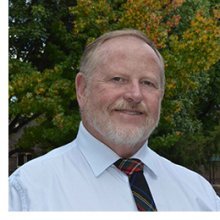
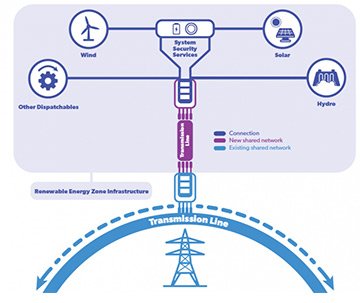
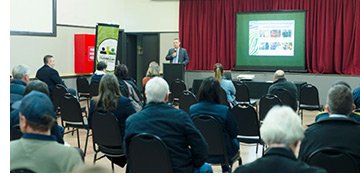
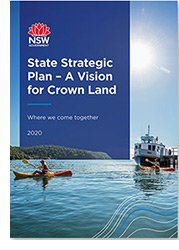
July 2020 Newsletter
Thursday 30th of July 2020
In this Issue
- Welcome from the Chair
- National Debt – What Does it Mean for the Economy?
- There is More to Population Figures Than Meets the Eye
- State’s Largest REZ to be in the Northern Inland
- A New Way for Businesses to Connect with Namoi Councils
- Sharing Conversations About Regional Australia
- Help Plan for the Future of Crown Land
- Featured Grants and Funding Opportunities
Welcome from the Chair

Dear Northern Inlanders,
As our region continues to deal with the effects of COVID-19 restrictions, ongoing drought impacts and the bushfires, many of us are also paying attention to what this means for our national economy. Looming national debt levels not seen since World War II are a daunting prospect, yet possibly necessary for the recovery of our nation. Our economist, James Pryor has produced a report on the current economic downturn that is well worth a read for anyone who would like to further understand these unique times.
Critical to the recovery of our region is to be supporting our local businesses by buying local whenever you can, including business to business. It is pleasing to see five of the local Councils in our region coming together to make it easier for our local businesses to connect with them, and you can find out more information below.
The recently released research from the Regional Australia Institute provides some interesting insights to the mobility of Australia’s population. It is pleasing to hear that there are over 65,000 more people who moved to regions from capital cities than the other way around. Attracting new residents to our communities is key to the future of our region, and this data is a useful tool for ensuring the effectiveness of marketing strategies to do so.
Regards,
Russell Stewart
Chair
National Debt – What Does it Mean for the Economy?
High debt is scary in any way you want to look at it. Australia has not seen national debt to GDP levels as was announced by the Australian Government’s Treasurer since the end of WW2. However, without the use of debt, the Australian health and economic response would not have been near as effective. National debt isn’t the bad story here. The lives affected and lost to the pandemic and the economic fallout that we experience through job losses is.
In line with the global economic outlook, Australia is facing an economic downturn that is expected to rival the great depression if global government responses are insufficient in tapering falls in demand of goods and services. Government spending has been targeted to reinvigorate confidence in people’s health, reduce business uncertainty and stabilise labour markets through policy such as Jobkeeper, Jobseeker and business transfers.
There are ways to recover from this pandemic and recession. Global supply chains have been impacted severely and should be filled with Australian exports of goods and services. Domestic supply chains can be repaired quickly, nationally. We saw this through business responding to the need for PPE during the pandemic and they continue to do so. Finally, local recovery is generated from buy and supply local approaches. Look to your neighbour as they may have what you need and are most likely doing it tough too.
RDANI are supporting the Northern Inland region by providing a link between all three tiers of Government, business and the community. A brief overview of national debt and measures that support economic recovery is available to help our region get through this pandemic and recession. We are positioned to support with grants, economic impact analysis and networking with the view of promoting long-term regional economic growth. Let’s get through this pandemic together.
You can view the full report on the effect of the National debt by our economist, James Pryor on our website.
There is More to Population Figures Than Meets the Eye
In 2018-19 capital cities accounted for 79% of Australia’s population growth and in that year, Sydney’s population grew by more than twice the rate of the rest of New South Wales. While the population of Northern Inland region grew by 3% from 2011 to 2016, the Greater Sydney region grew by 10% in the same time period.
On the surface, the growth figures for regional areas may seem disapointing compared to those for our capital cities, but there is more to these figures as highlighted in the recently released research by the Regional Australia Institute in their The Big Movers Report.
It is a popularly held belief that people are moving from regional areas to the cities in pursuit of career progression and lifestyle choices. While this may be true for some age groups, in total 65,204 more people moved from capital cities to regional areas in 2011 to 2016, than those who moved from the regions to our capitals. Sydney had the largest outflow to regional areas, with 64,756 more people moving to regional areas than it received.
The RAI’s research also showed that when people moved from the cities, they tended to relocate to regional areas of the same state. Sydney lost 103,942 people to regional NSW, followed by Brisbane, which lost a comparatively smaller 16,881 people to regional NSW.
| Number of people who moved to regional NSW from: | |
| Sydney | 103,942 |
| Brisbane | 16,881 |
| Canberra | 15,273 |
| Melbourne | 12,278 |
| Perth | 4,265 |
| Adelaide | 3,338 |
| Darwin | 2,307 |
| Hobart | 1,044 |
Note: Adapted from The Big Movers by the RAI
Mobility to and from capital cities is only part of the story, with over 690,000 people moving from one regional area to another and 80% of regional residents considering a move intend to relocate to another regional area. Further, 30% of the youth that leave regions for the cities, will return to a regional area.
What does this mean for the Northern Inland? The data from the RAI shows that there is more to mobility figures than what may appear on the surface. By understanding these trends, efforts to attract residents to our region can be more effective by targeting marketing to residents of geographic areas that are more likely to move to our region. These figures show that marketing the Northern Inland to residents in Sydney may be more effective than targeting other capitals which have lower rates of mobility to regional NSW.
Further, the large number of people that are moving between regions are a significant resource of potential residents as shown through these figures and should also be included in our marketing strategies.
State’s Largest REZ to be in the Northern Inland

With the support of a $80 million investment from the NSW Government, the New England region will become the state’s largest Renewable Energy Zone (REZ). These zones involve the development of new power grid infrastructure to connect multiple energy generators in the same zone. They are effectively the modern-day equivalent of a power station, and combine the generation, transmission, storage and system strength services. Three renewable energy zones are planned by the NSW Government for the New England, South-West and Central-West Orana. This infrastructure not only prepares the state for the expected retirement of thermal power stations but is also expected to provide a range of other benefits including improving electricity reliability, increasing affordability, and supporting emissions reductions.
Member for Northern Tablelands, Adam Marshall said the 8,000 MW REZ will deliver the jolt needed to recharge economies and communities right across northern NSW. The New England REZ is expected to attract $12.7 billion in investment for new energy infrastructure and will encourage employment opportunities, with the REZ expected to create 2,000 construction jobs and 1,300 ongoing jobs. “For the first time in our region’s history, we are on the cusp of being a net exporter of energy building wealth in our communities,” he said. “The benefits of the New England REZ blow way beyond the renewable energy sector, offering the opportunity for mass investment in things like public roads, telecommunications infrastructure and health services. Quality infrastructure is not only vital for the efficient delivery of electricity to the network but will also play a role in encouraging people to relocate to our area to work on these ground-breaking projects.”
You can find out more about Renewable Energy Zones and how they are part of the NSW Government’s Electricity Strategy and Transmission Infrastructure Strategy on the Energy NSW website.
A New Way for Businesses to Connect with Namoi Councils

It is now easier for local businesses to connect with Gwydir Shire, Gunnedah Shire, Tamworth Regional, Walcha and Liverpool Plains Shire through a new purchasing and procurement platform, VendorPanel Market Place.
“This is an exciting opportunity for any registered business that might have a service or product required by local government – from builders to caterers, and from water services to advertising – to ensure they are considered by local government.” said Gunnedah Shire Mayor, and Namoi Unlimited Chair, Jamie Chaffey.
VendorPanel Marketplace is Free for suppliers, there is no costs for signing up to conduct your existing business with the Councils or to receive new notifications, submit quotes and get requests for purchasing from the Councils. Once registered, your business profile will be available to each of the Councils when they search for the applicable work categories for your business.
Businesses can register through the VendorPanel Marketplace website.
Sharing Conversations About Regional Australia
The Sustainable Economic Growth for Regional Australia (SEGRA) conference is usually held each year to explore key issues that are affecting regional Australia and seeks to provide positive outcomes for the future of regional areas.
Although this year’s conference has been postponed, SEGRA has been hosting a range of free conversations about the effects of the pandemic on regional Australia and the path to recovery.
Topics covered by the workshops have included, but not limited to:
- The impact of COVID-19 on regional Australia
- Encouraging Entrepreneurship
- Keeping your main street alive
- The role of universities
- Improving collaboration
- Opportunities of the circular economy
- The pathway to recovery
Recordings of the past workshops are available on their YouTube channel playlist and you can subscribe to their newsletter to receive notifications about future webinars on the SEGRA website.
Help Plan for the Future of Crown Land

Crown land is enjoyed by many community members for a variety of purposes such as community halls, parks, reserves and campgrounds. It comprises of 42% of all land in NSW and provides economic, social, cultural and environmental value for our communities.
The NSW Government is currently developing a State Strategic Plan for Crown Land for 2020 to 2030, which identifies outcomes for the key priority areas around short, medium and long term timeframes.
The Department of Planning Industry and Environment is seeking community feedback on their Draft State Strategic Plan. Submissions can be made using their online tool, mail or email by the 20th of August through their website.
Featured Grants and Funding Opportunities
To help businesses and individuals affected by Coronavirus (COVID-19) access the available assistance we have created a dedicated Coronavirus Assistance page on our website. This page will be updated as details become available on the recently announced economic stimulus packages from the Australian and NSW Governments.
There is also wide range of assistance available for individuals, businesses and communities that have been affected by the ongoing drought and the recent bushfires. To help you access this support, we have created dedicated Drought Assistance and Bushfire Assistance pages on our website which are being updated reguarly.
Below are some featured grants and funding opportunities from the multitude of open grants listed in the Grants and Funding Opportunities area of our website. Our website is updated weekly with new listings and updates and all are applicable to our region, so it is a great resource if you are looking for funding for a specific project.
You can also sign up to our Business and Infrastructure Funding Opportunities and the Community Grants and Award Programs newsletters through the simple form located on the left-hand side of our website: www.rdani.org.au, to receive monthly summaries of currently open grants.
Smart Giving 2020 - Schools Plus
Current Round Closes: 14th of August 2020
Value: Up to $30,000
Run By: Schools Plus
Provides support to schools to improve the learning outcomes of students facing disadvantage. Through the program, schools have an opportunity to design and deliver projects which explore innovative, creative and progressive approaches in education. To enable this, Schools Plus matches schools with donors to provide funding for projects which can bring about transformational change.
EOIS for projects starting in Term 4 2020 close on the 14th of August. These projects are designed to meet immediate bushfire or COVID-19 crises recovery plans.
EIOS for projects starting in Term 1 2021 close on the 11th of September. These can be projects responding to crises or designed to meet long-term strategic school plans.
ANZ Seeds of Renewal
Closes: 19th of August 2020
Value: Up to $15,000
Run By: Fundation for Rural and Regional Renewal
The program focuses specifically on helping to build vibrant and sustainable rural communities and ensure the ongoing prosperity of regional Australia. It is built on two key tenets:
- Vibrant communities are diverse and inclusive with strong social capital, where everyone can participate and build a better life.
- Sustainable communities innovate, expand and create opportunities that will deliver demonstrable medium to long-term economic benefit to the community, contributing to economic sustainability.
Through the Seeds of Renewal program, ANZ commits $250,000 which is distributed through grants of up to $15,000 to community organisations for projects that will help their community thrive.
This year Lenovo is again supporting the program, with the donation of 12 ThinkPad L490 laptops valued at over $20,000 to eligible community projects. This means community groups can apply for a funding grant or for IT equipment.
National Product Stewardship Investment Fund
Closes: 21st of August 2020
Value: $300,000 to $1,000,000
Run By: Australian Government Department of Agriculture, Water and the Environment
The objectives of this grant opportunity are to support organisations across Australia to:
accelerate work on new industry-led product stewardship schemes, and
improve the rates of recycling across new and existing schemes
You can use your grant for one or more of the following activities:
- business case development
- scheme design
- scheme implementation
Related Pages







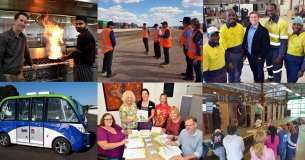 Latest News
Latest News
